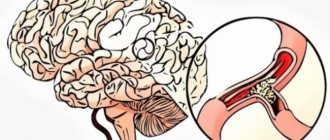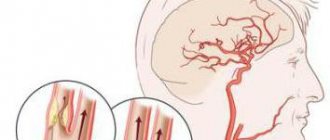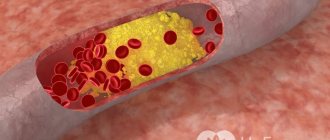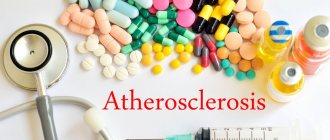Brain aneurysm
A cerebral aneurysm usually develops asymptomatically. The disease manifests itself suddenly due to the rupture of an aneurysm. Some patients complain of headaches for several days or weeks before bleeding, but they do not have any characteristic features that would predict the occurrence of bleeding. A severe headache appears suddenly, in circumstances that suggest a connection with an increase in blood pressure, for example, during physical activity, coughing, emotions. The headache gets worse with every movement. From the very beginning it is accompanied by nausea and vomiting, and loss of consciousness is possible.
When to see a doctor
Brain diseases during exacerbation require urgent hospitalization. Doctors should be contacted immediately in the following cases:
- Severe skull injuries (penetrating, blunt, gunshot, wounds, bruises, blows).
- Strong muscle tone in the back of the head, confusion, fever.
- Sudden acute headache.
- The unexpected appearance of drawn-out speech, lethargy, numbness of the limbs.
- Inability to concentrate and remember simple things.
- Convulsive seizure with loss of consciousness.
- Sudden deterioration of vision.
- Protrusion and pulsation of the fontanel in newborns.
Other symptoms that clearly indicate diseases of the human brain should also not be ignored. The sooner a diagnosis is made and treatment is started, the greater the patient’s chances of recovery.
Alzheimer's disease
This is a disease of the nervous system that most often occurs in people over 65 years of age. At first, the disease may manifest itself as short-term memory impairment. Sometimes mood disorders appear: the patient is depressed or aggressive. In a later period, the patient already exhibits obvious memory impairments, both short-term and long-term. Often, when leaving home, a person is unable to find his way back. Symptoms of anxiety and depression increase, and hallucinations occur. The patient stops taking care of himself.
Diseases of the scalp
In addition to diseases of the head itself, this group of pathologies also includes dermatological pathologies. Among them is damage to the skin and its appendages, in particular, the hairline. This issue especially worries the female half of the population. Indeed, such disorders as fragility and hair loss, loss of shine and silkiness are common. To fix this, women make various masks and use special shampoos. However, scalp disease also occurs in men. In these cases, a symptom such as alopecia is often observed. This disease is characterized by pathological hair loss, leading to baldness. There are diffuse and focal (areas) alopecia. Baldness can develop not only in men, but also among the female population. The exact causes of this symptom are not known; it is believed that it occurs under the combined influence of several damaging factors. Most often, diffuse alopecia develops with chronic anemia and diseases of the adrenal glands. Patchy baldness can be caused by a fungal infection. In most cases, it develops after contact with infected pets (cats). Also causes of alopecia areata are pathologies of the thyroid gland, chronic stress, helminthic infestation, etc.
Stroke
Stroke can be in the form of hemorrhage (hemorrhagic stroke) or ischemia (ischemic stroke). Symptoms of the disease depend on the location and extent of brain damage. Most often this is paralysis, loss of the ability to understand others and speak. One of the causes of stroke is poor circulation in the brain. Risk factors for stroke include smoking, heart disease, obesity and diabetes.
Causes of head diseases
The cause of the head disease depends on what kind of pathology occurs in a given patient. There are the following unfavorable factors that contribute to the development of diseases:
- Infectious agents. In most cases, microorganisms cause inflammatory diseases. These include pathologies of the brain and its membranes. In addition, bacterial and viral particles are the cause of the development of skin diseases.
- Fungal infection of hair follicles.
- Hereditary predisposition. Many head diseases are genetically determined. This is especially true for mental pathologies. For example, a disease such as schizophrenia is often inherited or observed in close relatives. It is now known that in some diseases the genetic code changes. Similar pathologies include Alzheimer's, Pick's, Parkinson's, Huntington's chorea, etc.
- Bad habits.
- Atherosclerosis of arteries and hypertension.
- Obesity.
- Oncological processes in the brain.
- Benign neoplasms.
- Bites of tropical insects, encephalitis tick.
- Specific pathologies: syphilis, AIDS.
- Vasculitis.
- Head injuries.
In some cases, the cause of the disease cannot be determined. Congenital pathologies develop as a result of fetal ischemia during pregnancy, infectious lesions in the mother, bad habits, chemical and ionizing effects.
Parkinson's disease
This disease of the central nervous system most often affects men. The average age of patients with Parkinson's disease is 58 years.
Symptoms appear gradually, sometimes over several years. At first, these are nonspecific signs: fatigue, weakness, fatigue, some awkwardness in movements. Often such signs are attributed to age or rheumatic diseases. However, after a while, symptoms may worsen, such as poor balance or difficulty performing simple tasks such as getting out of a chair or bed.
The main signs of Parkinson's disease are a general slowing of movements, a forward tilt of the torso, trembling of the arms (less often the legs or head), problems with the initiation of movement, and difficulties in performing everyday activities. Parkinson's disease is caused by the death of nerve cells in a part of the brain called the substantia nigra. Until now, no effective cure has been found for this disease; the only thing that can be done is to alleviate the symptoms.
Symptoms
The clinical picture is determined by the type and location of brain damage. A common symptom of damage to this organ is headache. It has a different character: acute or aching, squeezing or bursting, continuous or temporary. You can suspect the presence of a brain disease based on signs from the following list:
- convulsions;
- fainting;
- change in sense of smell;
- difficulty concentrating;
- deterioration of hearing, vision;
- swelling;
- memory problems;
- mood swings;
- muscle weakness;
- behavioral deviations;
- neck muscle tone;
- loss of appetite;
- numbness of the limbs;
- morning sickness;
- impaired balance and coordination;
- problems with concentration.
Article on the topic: Diet for gout during an exacerbation
Alcoholic encephalopathy
This is one of the types of alcoholic psychoses. The disease develops due to regular abuse of alcoholic beverages, which leads to the death of neurons - brain cells. Alcoholic encephalopathy has many different symptoms, but the main ones are mental disorders, such as:
- problems with sleep in the form of nightmares, daytime sleepiness, nightmares;
- memory loss, deterioration of intelligence;
- irritability;
- changes in the emotional background in the form of attacks of rage;
- hallucinations;
- anxiety.
Against the background of these symptoms, indigestion is observed, which is accompanied by nausea, vomiting, diarrhea, and malaise. The patient has an aversion to foods rich in proteins and fats, and a general decrease in appetite. Among the neurological and cardiac signs in patients with alcoholic encephalopathy, the following symptoms are observed:
- convulsions;
- severe tremors of the limbs;
- paralysis of any part of the body;
- stiffness of movements;
- increased sweating;
- chills;
- tachycardia.
Alzheimer's disease
This pathology is a form of dementia in which dramatic changes in a person’s character develop. The disease is a neurodegenerative incurable disease that can lead to complete personality degradation. Among all types of senile dementia, Alzheimer's disease ranks first. It occurs differently for each person. Pathology develops gradually, over 10–13 years, and not at one moment. At the initial stage, the patient may not be aware of his situation.
Alzheimer's disease can be suspected by disturbances in orientation in space, when an elderly person may forget the familiar way to the store or even to his own home. Common signs also include:
- absent-mindedness, forgetfulness;
- difficulties in understanding phrases spoken by the interlocutor;
- decreased vital activity;
- mental excitement;
- loss of interest in surrounding events;
- irritability, unmotivated aggression, mood instability;
Scientists are still guessing about the cause of this disease. Risk factors include age over 65 years, female gender and genetic predisposition. At the last stage, the disease causes the following symptoms:
- loss of everyday skills;
- movement is difficult, the person may not even get up or move;
- amnesia - the patient does not recognize his relatives;
- spontaneous urination;
- speech disorders that become incomprehensible.
Brain stroke
This disease is a consequence of impaired blood supply to the brain, which causes damage to its tissues. Today, stroke is common among all ages, so it can occur even in people under 30 years of age. Risk factors for the development of this disease are vascular atherosclerosis and hypertension. Depending on the nature of the course, a stroke occurs:
- Ischemic. In this case, oxygen starvation is observed, which is formed from a suspension or complete cessation of blood flow in a separate part of the brain. Such a stroke often occurs during sleep and is accompanied by numbness of the arm, cheek, speech impairment, increasing ringing in the ears, lethargy, and nausea.
- Hemorrhagic. It is a cerebral hemorrhage due to the rupture of a blood vessel due to severe stress or emotional overstrain. Hemorrhagic stroke causes paralysis of the limbs on one side of the body, speech impairment, passivity to the environment, fainting, and vomiting.
Vegetovascular dystonia
In medicine, the abbreviation VSD stands for vegetative-vascular dystonia. This diagnosis is still controversial because it includes a large number of different symptoms and does not have one specific cause. About 80% of adults and 25% of children suffer from VSD. In women it occurs more often due to greater emotionality. The causes of vegetative-vascular dystonia are the following factors:
- smoking, alcohol;
- climate change;
- heredity;
- traumatic brain injuries;
- cervical osteochondrosis;
- hormonal disorders;
- poor nutrition;
- psycho-emotional stress.
The symptoms of vegetative-vascular dystonia are extremely diverse. Signs of the disease appear in almost all body systems.
- blood pressure surges;
- sensitivity to weather changes;
- headache;
- nausea;
- difficulties adapting to physical activity;
- lack of oxygen, attempt to inhale more air;
- heartache;
- panic attacks, phobias, depression, suspiciousness;
- arrhythmia;
- mood swings;
- dizziness;
- insomnia, weakness, fatigue;
- violations of thermoregulation, increased sweating, hot flashes;
- hypochondria.
Dementia
This is the name for acquired dementia, which is accompanied by a persistent decrease in mental activity with the loss of previously acquired knowledge and practical skills. This brain pathology is typical for older people. In addition to the loss of existing skills, patients have difficulty learning new information. Dementia may be associated with Alzheimer's or Parkinson's disease. At an early stage, the pathology is manifested by the following symptoms:
- worsening mood;
- aggression;
- apathy towards everything.
Article on the topic: Pip on the tongue - causes and treatment with medications or folk remedies
In the future, the disease leads to speech impairment, memory loss, and hallucinations. A person at this stage of the illness is sure that everything is fine with him, constantly wants to go somewhere, confuses the right and left sides, and cannot name objects. The patient may stop washing and taking care of himself. Severe dementia manifests itself as follows:
- it is difficult for the patient to recognize relatives;
- there is a complete loss of orientation in time and space;
- the person requires constant care because he cannot eat or perform simple hygiene procedures on his own.
A brain tumor
This pathology is the most dangerous among brain diseases. At an early stage, tumors are difficult to diagnose. In general, they are pathological proliferations of mutated cells, provoked by an increase in intracranial pressure. Characteristic signs of a tumor are the following symptoms:
- morning headache attacks;
- psychical deviations;
- seizures;
- vomit;
- paresis of one limb.
If the tumor is localized in the frontal part of the head, then the patient experiences increased nervousness and unreasonable aggression. In addition, his mental activity may be difficult. Tumors in the temporal region are accompanied by panic attacks, depression, and memory impairment. The patient has a drunken gait, vision problems, and slurred speech.
Brain cancer
In the case of a brain tumor, the following symptoms occur: severe, intensifying headache, especially in the morning, which disappears after vomiting, disturbance of balance, consciousness, and the appearance of convulsions.
The procedure that determines further diagnosis: examination of the fundus and EEG, i.e. study of the electrical activity of the brain. If the results of these tests are unfavorable, a computed tomography scan or magnetic resonance imaging may be performed to confirm or rule out a brain tumor.
How to relieve vasospasm in the head
Cerebral vasospasms are eliminated with conservative treatment. Medicines are used, the patient’s lifestyle is changed, a diet is followed, and treatment is carried out in sanatoriums. Symptoms are eliminated, treatment is also aimed at preventing relapses and restoring brain function.
To remove the manifestations of vasospasm at home, the following actions will help:
- First you need to wash your face with cool water.
- Take a bath with cool water for your feet for 10 minutes.
- You need to open the windows in the room for fresh air.
- We need to calm down and lie down.
- You should drink warm tea.
- Gently massage the temporal region, cervical region, and collar segment.
- They take a number of medications to relieve vasospasm. They are treated with Analgin and other analgesics, for example, Tempalgin, Ketanov. Antispasmodic drugs are indicated. Treatment is carried out with Papazol, No-shpa, Spazmalgon. Aspirin and its analogues are indicated; the condition is alleviated by Cardiomagnyl and Lospirin. Nitroglycerin with Validol is placed under the tongue. Corvalol and Barboval drops are used.
Before using medications, you should consult your doctor.
All these emergency measures will help quickly relieve cerebral vascular spasm.
Drug therapy
For spasms of cerebral vessels, treatment is aimed at eliminating provoking factors, adjusting prothrombin and cholesterol blood parameters, and strengthening the walls of blood vessels. They are treated with antispasmodics and vasodilators for spasms of cerebral vessels. Therapy with Papaverine or Eufillin is indicated.
To relieve vasospasm, a list of medications is also used:
- Plant-based sedatives (valerian extract, peony tincture).
- Statins that normalize blood cholesterol index. Treat with Vasostatin, Simvastatin.
- Fibrates if the patient is prone to vasospasm. Therapy is carried out with Atromide, Clofibrate.
- If there is spasm of the blood vessels in the head, you can take nootropics; they will improve cerebral microcirculation. The pathology should be treated with Cerebrolysin, Nootropil, Piracetam.
- Antiplatelet agents that reduce blood density. Aspirin tablets are shown.
To minimize relapses and maintain blood vessels in a stable state, taking Atomax or Lipoford is indicated.
Folk remedies
In addition to the main therapy, treatment of cerebral vessels with folk remedies is used. Before using unconventional methods, you should consult a doctor.
Amyotrophic lateral sclerosis
This disease more often affects men and leads to damage to motor neurons, gradual disruption of muscle function, and their atrophy. To date, it has not been revealed why people begin to suffer from amyotrophic lateral sclerosis. Genetic mutations account for only 5-10% of cases of the disease.
The first symptoms are problems with muscle control in the arms, then in the legs. As the disease progresses, patients have less and less control over their muscles. The disease is incurable and death occurs as a result of weakening of the respiratory muscles.
Meningitis
The most common cause of meningitis is meningococcal infections. Most often it affects children under 5 years of age. The second risk group is teenagers and young adults.
The symptoms of meningitis vary. Usually the disease begins with a sudden fever, sometimes vomiting is present. After 4-6 hours there is a temporary improvement, but then the clinical condition worsens. Depending on the form of meningitis, symptoms appear: headache, convulsions, high fever, impaired consciousness or symptoms of sepsis, which is characterized by a hemorrhagic rash that most often affects the legs.
Multiple sclerosis
This is the most common disease of the peripheral nervous system. Multiple sclerosis most often occurs in the form of relapses and remissions, i.e. complete or partial disappearance of symptoms between subsequent relapses of the disease.
The causes of the disease are not fully understood. The appearance of a specific inflammatory reaction in the white matter of the brain and spinal cord leads to the destruction of the myelin sheath of nerve fibers. This process is called demyelination and occurs in various parts of the brain and spinal cord. Nerve fibers deprived of myelin cannot conduct impulses, and neurological symptoms appear: imbalance, dizziness, and a tendency to fall.
Head diseases: treatment of pathologies
The choice of treatment method depends on the pathology. For inflammatory diseases, antibacterial therapy is prescribed. The drugs of choice include a solution of Penicillin, Ceftriaxone, and Erythromycin. To improve blood circulation, medications such as Cerebrolysin and Piracetam are prescribed. Treatment of mental illness is carried out in a special medical institution. Painkillers are used as symptomatic therapy. If you are prone to blood clots, it is recommended to take Aspirin daily. In case of acute circulatory disorders, aneurysms and tumors, surgical intervention is necessary.
Huntington's disease
The cause of the disease is a genetic defect. The disease usually appears around the age of 40. Chorea is a syndrome characterized by erratic, jerky, irregular movements, initially limited to a few muscle groups and leading to constant restlessness.
In later stages of the disease, speech disturbances, swallowing problems, and cognitive and emotional disturbances occur. Huntington's disease is actually incurable. Therapy is based solely on symptom relief.
Complex therapy of the syndrome
If a patient constantly has a headache in the crown or crown area, the doctor, after diagnosing the disease and determining its cause, may recommend the following treatment:
- taking medications that eliminate spasms: Ibuprofen, Aspirin, Paracetamol, Naproxen and the drug Tempalgin,
- hot water procedures: showers perfectly eliminate painful spasms,
- cold lotions constrict blood vessels, eliminate unpleasant pulsation: put an ice pack on a towel, apply to the problem area for 15 minutes,
- sedatives: Rizatriptan, Sumatriptan, Naratriptan,
- manual therapeutic and preventive therapy. A specialist can determine the cause of the disease and eliminate it in 3-4 sessions,
- acupuncture and massage,
- Botox procedures. A small amount of the drug administered intramuscularly causes a lasting effect - quickly relieves tension and eliminates spasms.
If the parietal part of the head hurts, you should not delay treatment, but consult a doctor as soon as possible, which will prevent the development of a more serious pathology.
Tick-borne encephalitis
The cause of tick-borne encephalitis is a virus that enters the human body after a tick bite. The disease is usually biphasic. After an asymptomatic incubation period, that is, a few days after infection, nonspecific symptoms appear in the form of fever, weakness, general malaise, and headaches. Sometimes at this stage the disease ends.
However, in some cases, a second phase occurs as a result of inflammation of the central nervous system. The disease is manifested by a very severe headache, high fever, vomiting and disorientation. This can cause death or leave permanent neurological consequences.
Causes of diseases
At first, almost all brain diseases occur without visible symptoms, so they can be identified in the final stages, when it is no longer possible to help the person.
The reasons for the development of such pathologies may lie in:
- Infectious diseases, for example, AIDS, rabies, etc.
- Skull injuries.
- The effects of harmful chemicals on the human body.
- Radioactive radiation.
- Bad habits (alcohol, smoking, drug addiction).
- Unbalanced diet.











